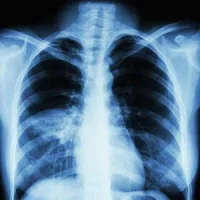Alarm fatigue in ICUs is a well-known issue; the U.S. Joint Commission’s national patient safety goals include reducing harm associated with clinical alarm systems (Goal 6). Cardiac monitors in particular trigger a high number of alarms compared to other ICU devices with alarms, such as infusion pumps and ventilators.
A project in Texas by Azizeh Khlaed Sowan, RN, PhD and colleagues found that changing default alarm settings and standard in-service education were not enough to improve alarm fatigue. Changes in default alarm settings of cardiac monitors reduced the total number of the target alarms by 24 percent. However, this along with reduced alarm rate and education on alarm management did not improve nurses’ attitudes toward alarms, alarm fatigue or maintaining best clinical practices. The study is published in JMIR Human Factors.
The quality improvement project, in a 20-bed transplant/cardiac ICU with 39 nurses, comprised changing the cardiac monitors’ default alarm setttings and education on monitor use. The researchers compared alarm data from the audit log of the monitors 10 weeks prior to and 10 weeks after the change in the monitor’s parameters. In addition, they assessed nurses’ attitudes and practices towards alarms using the Healthcare Technology Foundation National Clinical Alarms Survey.
Pre-intervention the alarm rate was 87.86 alarms/ patient day compared to 59.18 alarms/ patient day following the intervention. Both Arterial blood Pressure (ABP) and Peripheral Capillary Oxygen Saturation (SpO2) alarms were in the top three in both periods measured. Nurses’ attitudes were similar in both periods, and half requested more training on cardiac monitors.
The researchers found that nurses’ alarm fatigue and reduced trust in alarm systems were due to high frequency of nuisance alarms, confusion in locating the alarming device, a unit layout hindering alarm response, the inadequacy of alarm systems to alert nurses of changes in patients’ condition, the lack of clinical policies and procedures on alarm management and the complexity of the newer monitoring systems.
The authors conclude that training is required periodically. They recommend usability testing of cardiac monitors, training “super-users” and a competency checklist that includes key features for monitor use.
Image credit: Pixabay
A project in Texas by Azizeh Khlaed Sowan, RN, PhD and colleagues found that changing default alarm settings and standard in-service education were not enough to improve alarm fatigue. Changes in default alarm settings of cardiac monitors reduced the total number of the target alarms by 24 percent. However, this along with reduced alarm rate and education on alarm management did not improve nurses’ attitudes toward alarms, alarm fatigue or maintaining best clinical practices. The study is published in JMIR Human Factors.
The quality improvement project, in a 20-bed transplant/cardiac ICU with 39 nurses, comprised changing the cardiac monitors’ default alarm setttings and education on monitor use. The researchers compared alarm data from the audit log of the monitors 10 weeks prior to and 10 weeks after the change in the monitor’s parameters. In addition, they assessed nurses’ attitudes and practices towards alarms using the Healthcare Technology Foundation National Clinical Alarms Survey.
Results
Pre-intervention the alarm rate was 87.86 alarms/ patient day compared to 59.18 alarms/ patient day following the intervention. Both Arterial blood Pressure (ABP) and Peripheral Capillary Oxygen Saturation (SpO2) alarms were in the top three in both periods measured. Nurses’ attitudes were similar in both periods, and half requested more training on cardiac monitors.
The researchers found that nurses’ alarm fatigue and reduced trust in alarm systems were due to high frequency of nuisance alarms, confusion in locating the alarming device, a unit layout hindering alarm response, the inadequacy of alarm systems to alert nurses of changes in patients’ condition, the lack of clinical policies and procedures on alarm management and the complexity of the newer monitoring systems.
The authors conclude that training is required periodically. They recommend usability testing of cardiac monitors, training “super-users” and a competency checklist that includes key features for monitor use.
Image credit: Pixabay
References:
Sowan AK, Gomez TM, Tarriela AF et al. (2016) Changes in default alarm settings and standard in-service are insufficient to improve alarm fatigue in an intensive care unit: a pilot project. JMIR Human Factors
2016;3(1):e1. DOI: 10.2196/humanfactors.5098
Latest Articles
Alarms, alarm fatigues, ICUs
Alarm fatigue in ICUs is a well-known issue, with reducing … anational patient safety goal from the Joint Commisson In particular cardiac monitors trigger a high number of alarms compared to other ICU devices with alarms, such as infusion pumps and ventil










